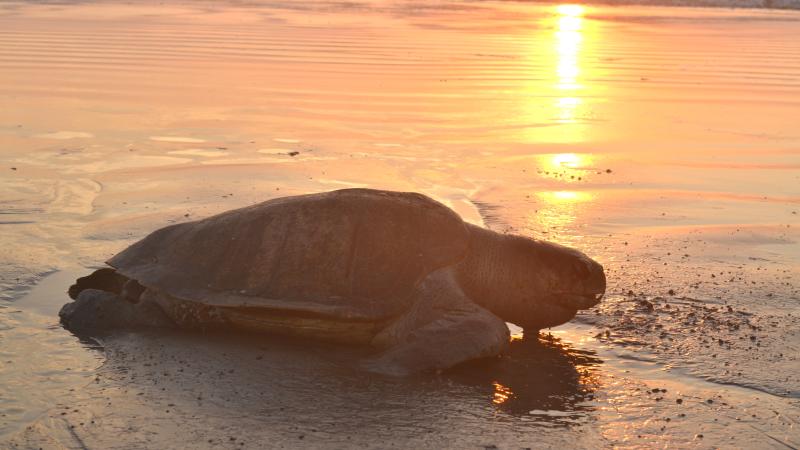A recent ICAR-CMFRI study reveals rapid loss of sea turtle nesting habitats along Karnataka’s coastline due to coastal erosion, seawall construction, and climate change. The study urges adoption of sustainable coastal management and community-driven conservation to protect endangered Olive Ridley and other sea turtles.
The tranquil beaches of Karnataka, a crucial nesting ground for sea turtles, are now under severe threat from human activity and environmental challenges, according to a comprehensive study by the ICAR-Central Marine Fisheries Research Institute (CMFRI), Mangaluru Regional Centre. The study spotlights how coastal erosion, seawall infrastructure, and climate-induced extreme weather events are resulting in alarming habitat loss for the Olive Ridley and other sea turtle species.
Unfolding Habitat Crisis
Locals and fishermen attribute the drastic decline in turtle nesting areas primarily to intensified coastal erosion and the extensive construction of seawalls — structures originally intended to protect shorelines but which ironically exacerbate habitat degradation by narrowing beach stretches. Key nesting sites including Panambur, Yermal, Kirimanjeshwara, and Bhatkal have significantly shrunk over the last decade, imperiling turtle reproduction cycles.
Multidimensional Research Approach
Led by Dr. Bindu Sulochanan, the study integrates nearly ten years of ecological data, field observations, water quality assessments, vessel traffic analysis, and local fishermen’s insights, painting a detailed picture of the complex interactions between natural dynamics and anthropogenic impacts.
Climate Change Compounds Risks
Rising sea surface temperatures and repeated El Niño events have further impacted coastal productivity and altered turtle foraging grounds. Additionally, 88 cyclonic storms between 2012 and 2023 have intensified sediment loss and storm surges, heightening vulnerability along the shore.
Suggested Conservation Strategies
-
Adoption of “soft engineering” solutions such as living shorelines with native vegetation to stabilize habitats naturally.
-
Regulation of artificial lighting near nesting beaches to prevent hatchling disorientation.
-
Improved coastal waste management to reduce litter threatening turtle health.
-
Empowering fishing communities to act as conservation partners via awareness and incentive programs.
-
Designation of protected zones for critical nesting areas to facilitate habitat restoration.
This study underscores the urgent need for integrated conservation efforts involving scientific innovation, local participation, and adaptive management to safeguard Karnataka’s invaluable sea turtle populations and coastal ecosystems.
Key Highlights
-
Over 52% of fishermen link turtle habitat loss to coastal erosion and seawall construction.
-
Significant beach narrowing recorded at major nesting sites despite seawall protection.
-
Climate change exacerbates coastal water productivity changes and storm impacts.
-
Conservation demands a blend of habitat restoration, community involvement, and soft engineering.
-
Promoting protected zones and reducing coastal pollution critical for turtle survival.
Sources: The New Indian Express, Times of India, ICAR-CMFRI Official Press Release, Research Matters

